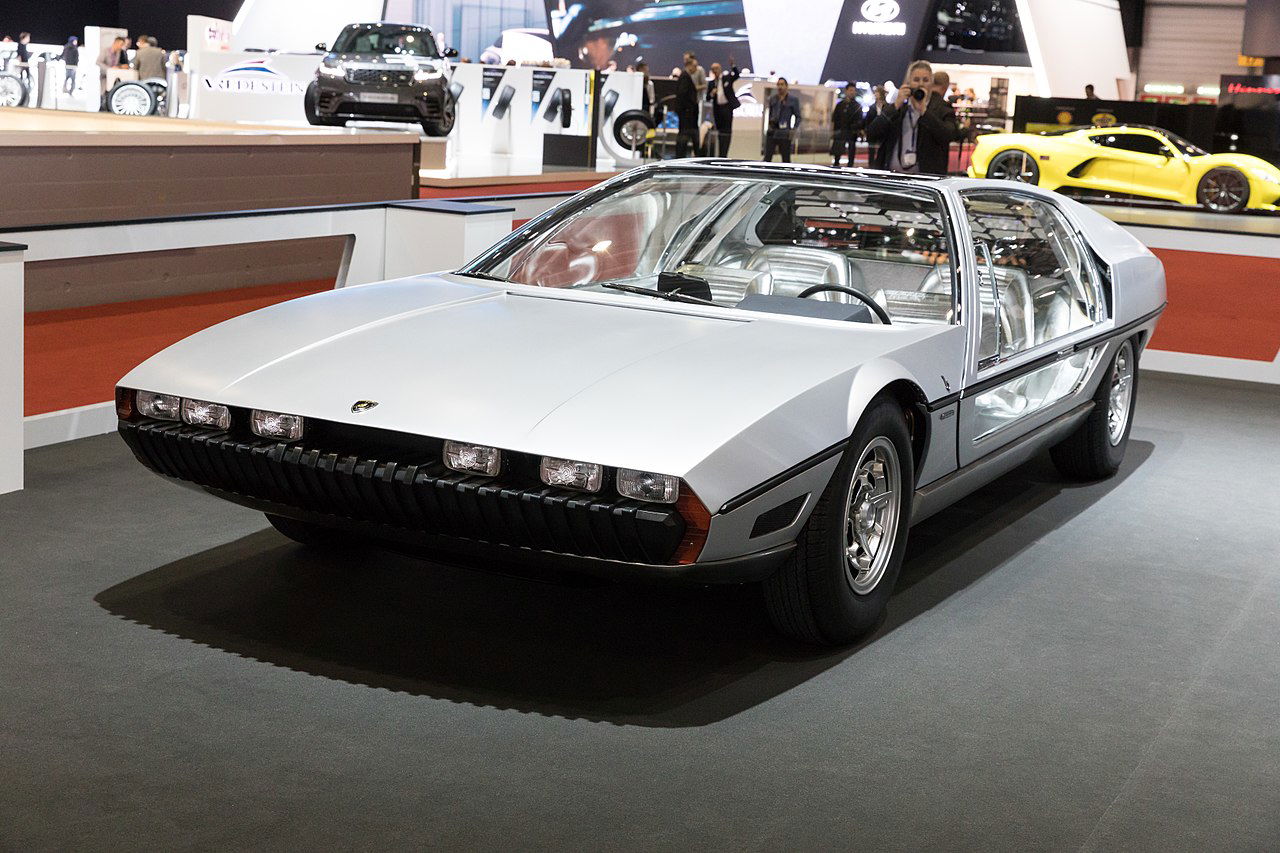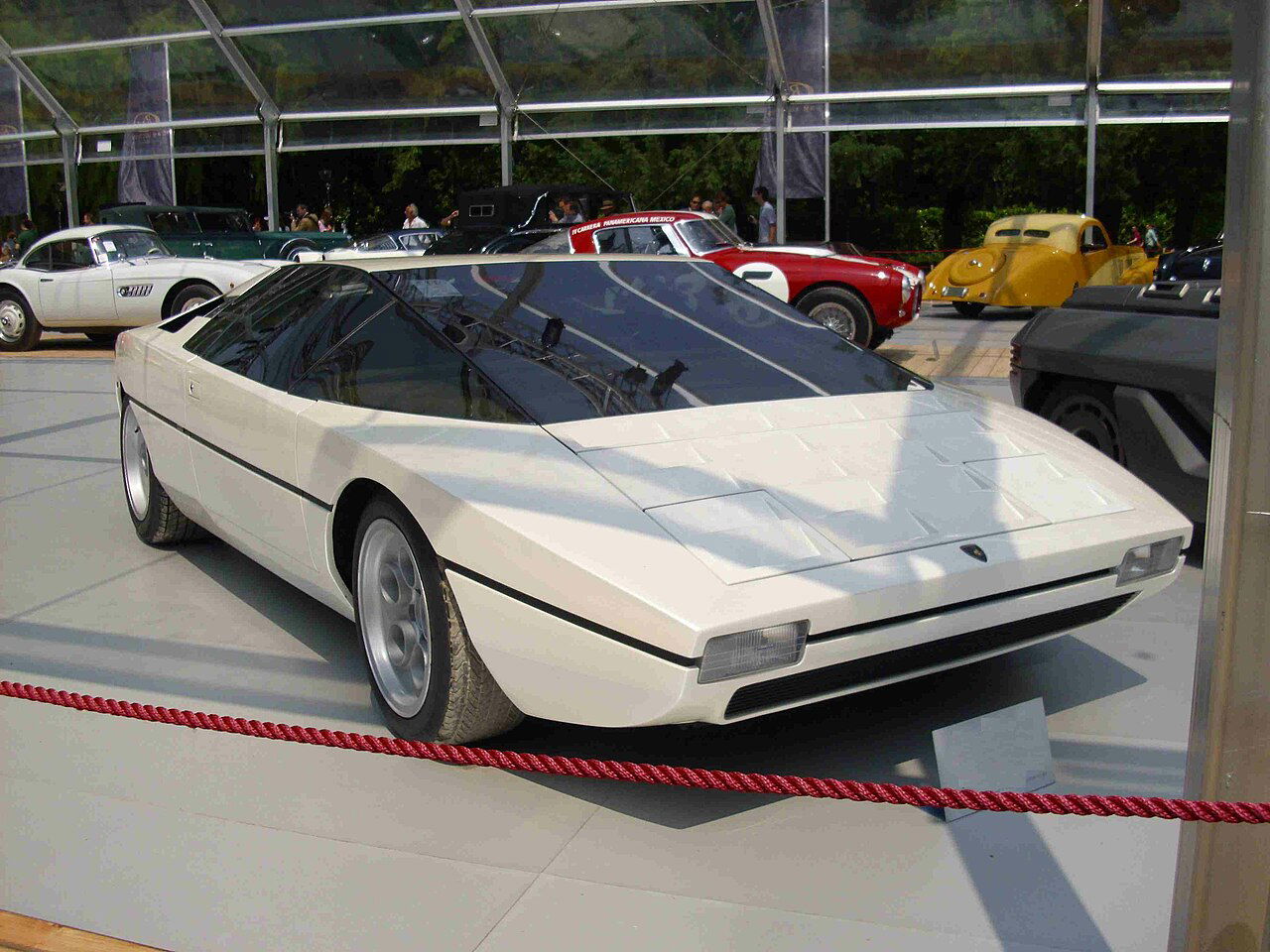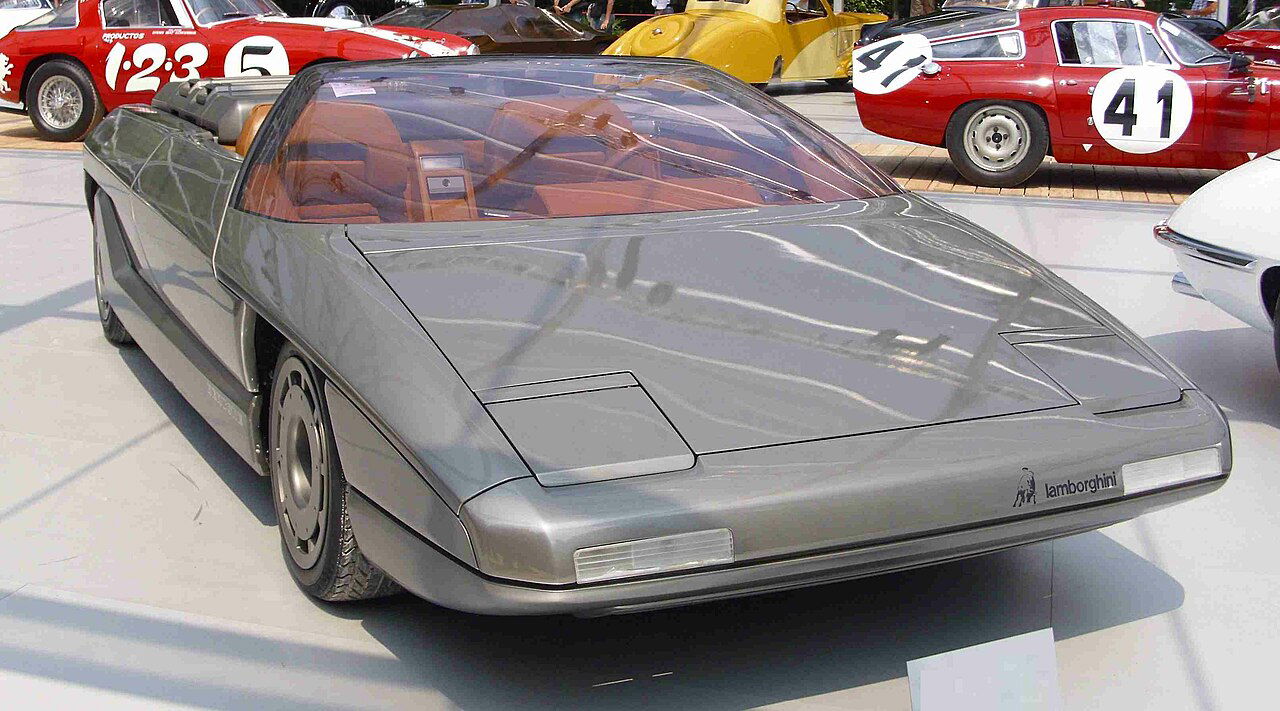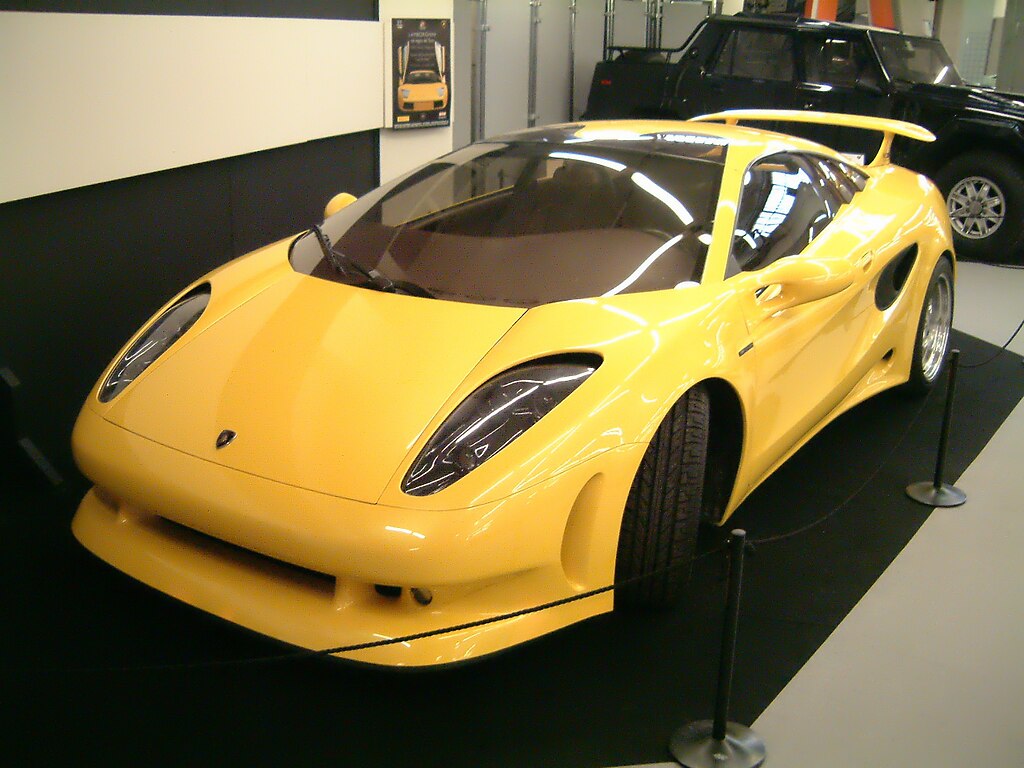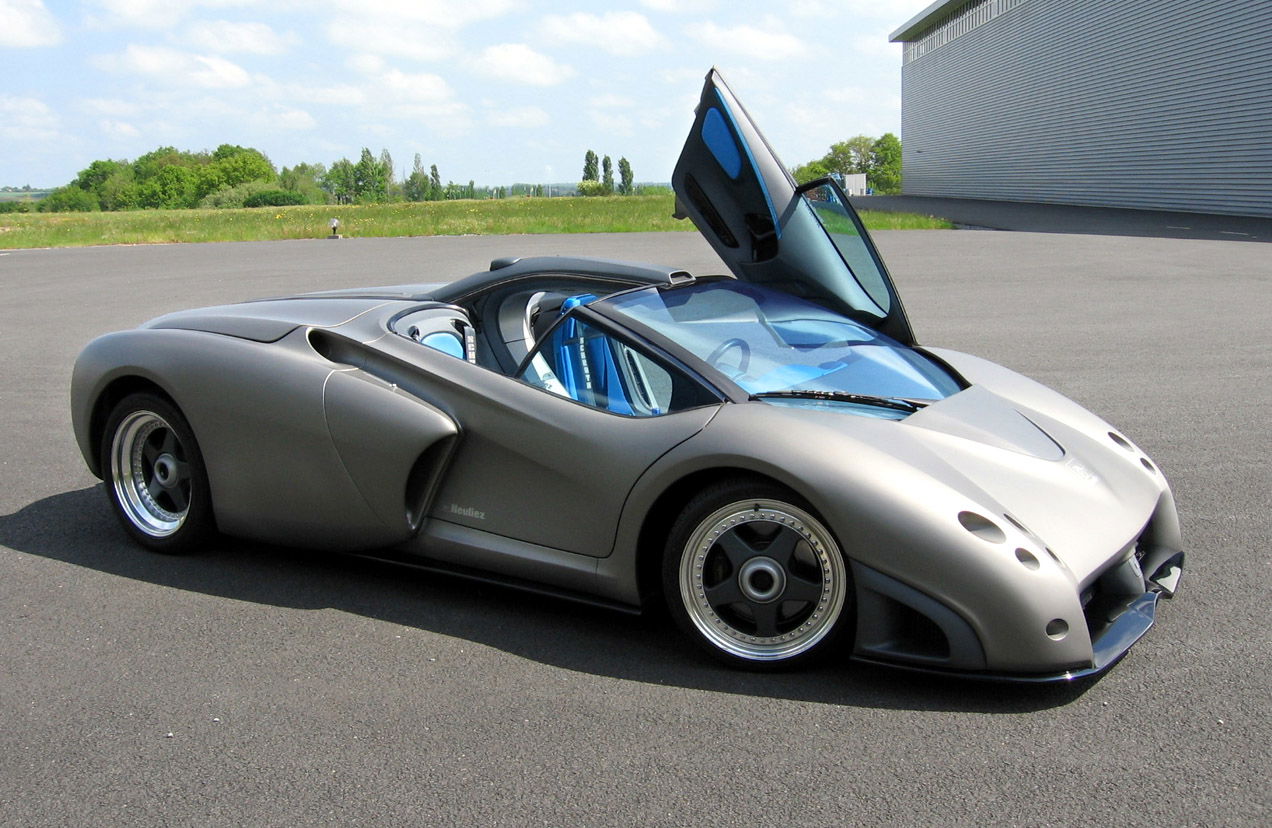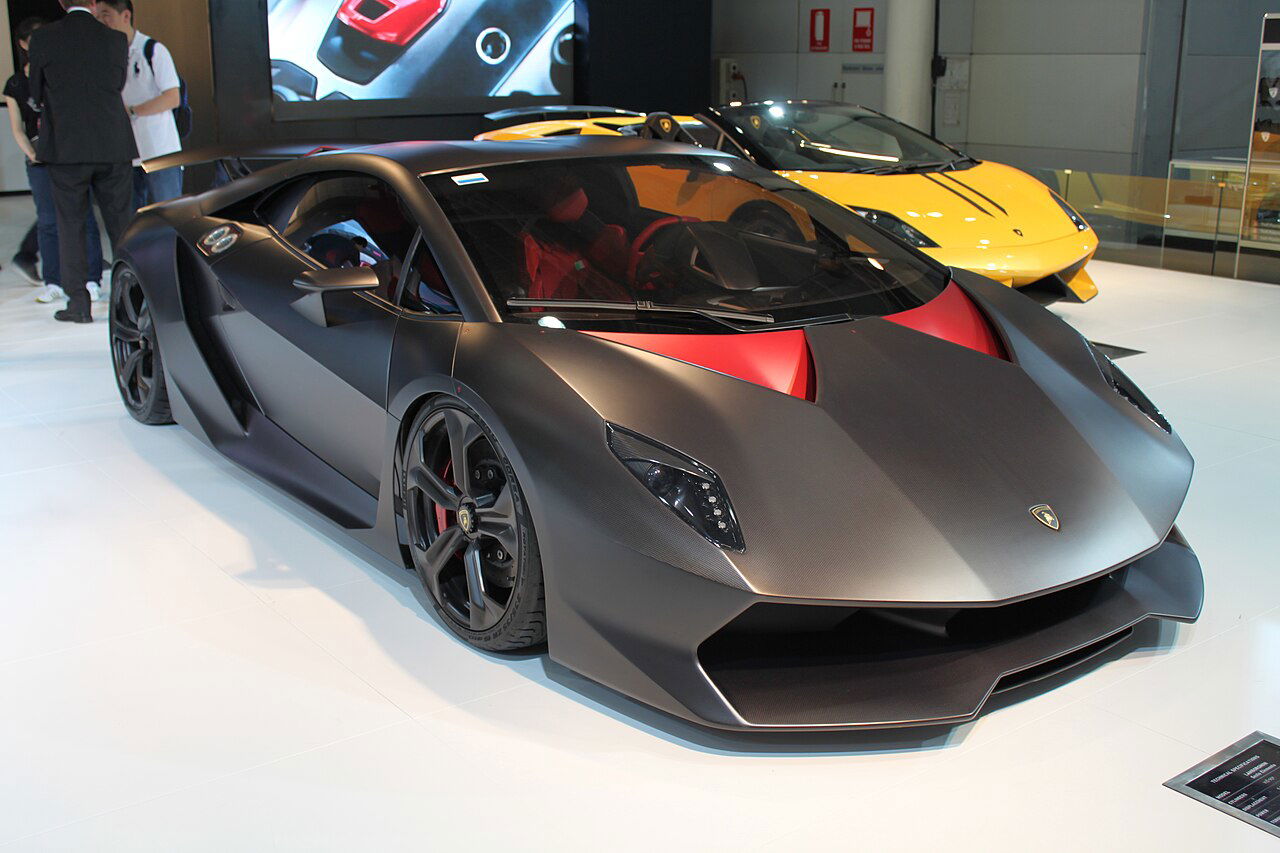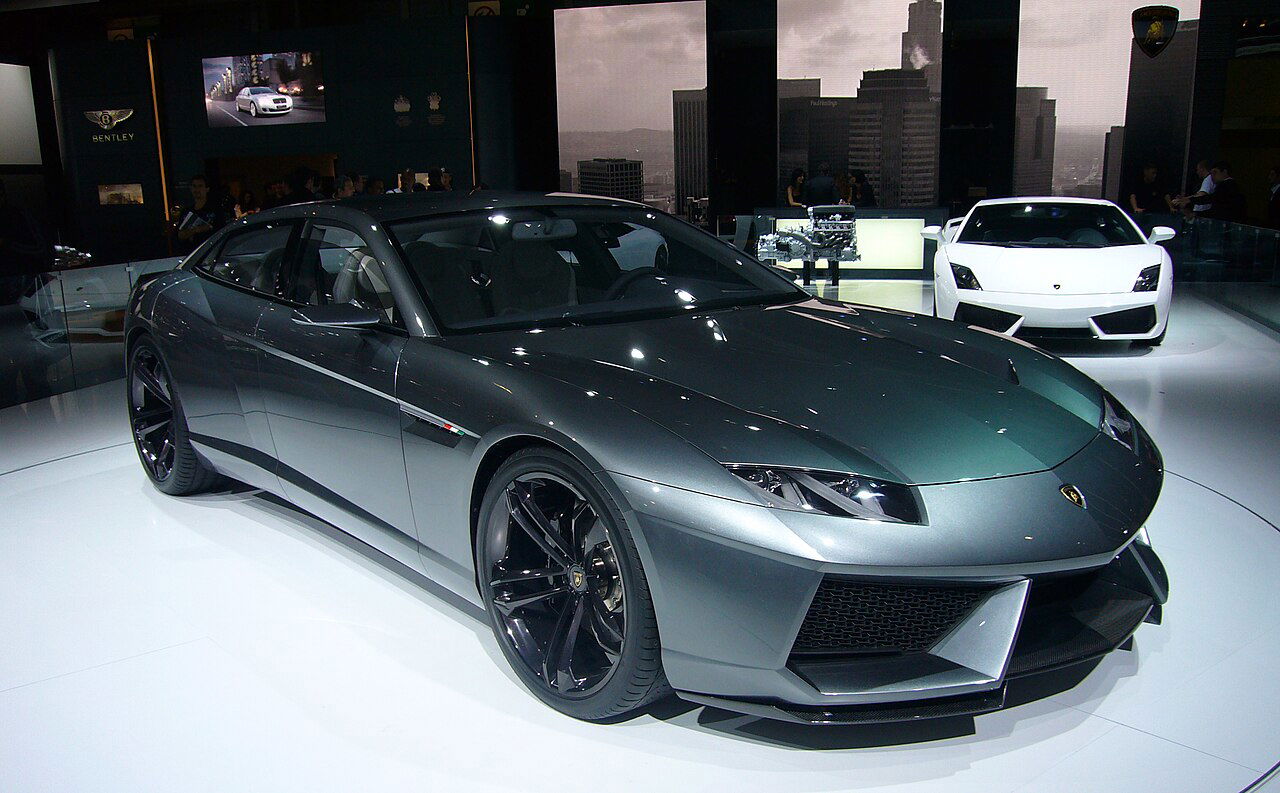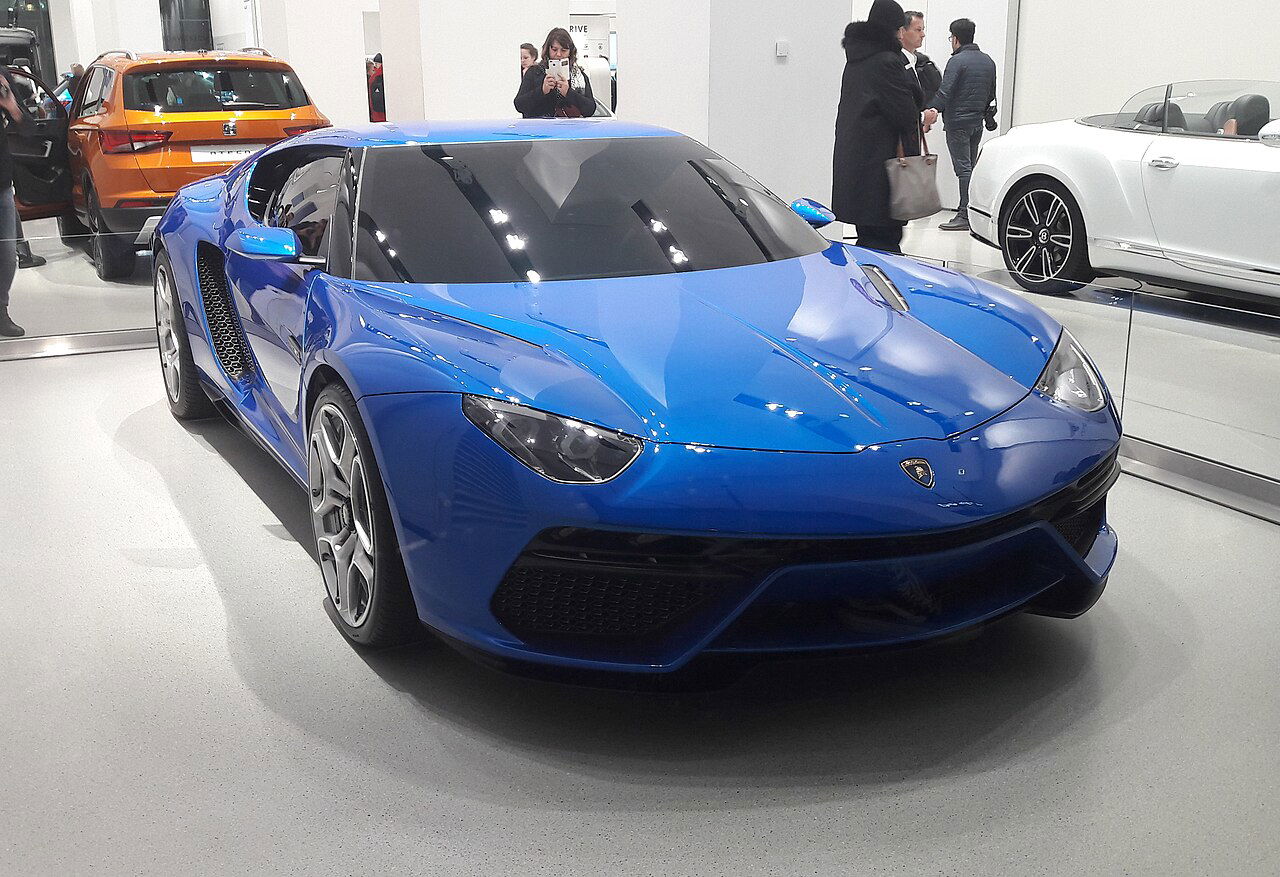Few automakers can do it like Lamborghini—turn outrageous ideas into rolling works of art as well as crafting a stunning lineup of concept cars that pushed the limits of design, performance, and pure audacity.
Some of these concepts evolved into production models, but many never made it past the prototype stage, leaving fans dreaming of what could have been.
From wild wedges that redefined supercar styling to futuristic visions that still look ahead of their time, these Lamborghini concepts prove that even the ones that never reached showrooms left a lasting mark on automotive history.
1. Lamborghini Marzal (1967)
The Lamborghini Marzal stunned audiences at the 1967 Geneva Motor Show with its futuristic look. Designed by Marcello Gandini at Bertone, this four-seater concept featured massive gull-wing doors and a panoramic glass roof that bathed the cabin in light.
Power came from a modest inline-six derived from Lamborghini’s V12, making it more of a grand tourer than a raging bull. Though it never saw production, the Marzal influenced later Lamborghinis, especially the Espada.
2. Lamborghini Bravo (1974)
Unveiled at the 1974 Turin Auto Show, the Lamborghini Bravo was a compact concept designed by Bertone as a potential replacement for the Urraco. Its sharp, angular styling epitomized the wedge-shaped supercar look of the ’70s, echoing the legendary Countach but in a smaller, more affordable package.
Powered by a mid-mounted V8, the Bravo showcased Lamborghini’s interest in offering a “junior supercar” for enthusiasts. Despite successful testing, economic challenges and internal struggles meant the Bravo never reached production. Today, it remains an iconic “what if” moment in Lamborghini history.
3. Lamborghini Athon (1980)
In 1980, Lamborghini unveiled the Athon, a striking roadster concept built during one of the brand’s most turbulent financial periods. Created by Bertone designer Marc Deschamps, the Athon boasted a clean, angular design and a completely open cockpit with no roof—embodying the spirit of freedom and futuristic styling.
It rode on a mid-mounted V8 and carried design cues that hinted at later Lamborghinis. The Athon never had production potential but instead symbolized creativity in a time of crisis.
4. Lamborghini Cala (1995)
Unveiled at the 1995 Geneva Motor Show, the Lamborghini Cala was a stunning concept created in collaboration with Italdesign. Designed as a potential replacement for the aging Jalpa, it featured sleek lines, a retractable targa roof, and a mid-mounted 4.0-liter V10 engine producing around 400 horsepower.
The Cala balanced aggressive styling with surprising everyday usability, showcasing Lamborghini’s ambition to expand into a more versatile sports car segment. Unfortunately, financial instability during the Chrysler and later Indonesian ownership eras kept it from production.
5. Lamborghini Pregunta (1998)
The Lamborghini Pregunta, revealed in 1998, was among the brand’s most radical concepts. Built by French coachbuilder Heuliez on the Diablo’s underpinnings, the car drew heavy inspiration from fighter jets, featuring sharp aerodynamic surfaces, a cockpit-like canopy, and advanced aerospace materials.
Powered by a 530-horsepower V12, it boasted a claimed top speed of over 200 mph. With stealth-like looks and a forward-thinking design, it symbolized Lamborghini’s boldness on the edge of the new millennium.
6. Lamborghini Sesto Elemento (2010)
The Lamborghini Sesto Elemento, unveiled at the 2010 Paris Motor Show, pushed the boundaries of lightweight engineering. Its name—“Sixth Element”—refers to carbon, the material that defined its construction.
Weighing just 2,202 pounds, thanks to extensive use of carbon fiber, the car delivered blistering performance with its 5.2-liter V10 producing 562 horsepower. Capable of hitting 62 mph in just 2.5 seconds, the Sesto Elemento was a track-focused marvel rather than a road car. While never mass-produced, a handful of units were made for exclusive track use.
7. Lamborghini Estoque (2008)
In 2008, Lamborghini shocked the world with the Estoque, a sleek four-door sedan concept introduced at the Paris Motor Show. Unlike anything else in the lineup, the Estoque blended Lamborghini’s aggressive design language with the practicality of four seats and ample space, aiming to rival high-performance luxury sedans from Porsche, Maserati, and Aston Martin.
With a front-mounted 5.2-liter V10, it hinted at expanding Lamborghini beyond supercars. However, the global financial crisis put the project on hold indefinitely.
8. Lamborghini Concept S (2005)
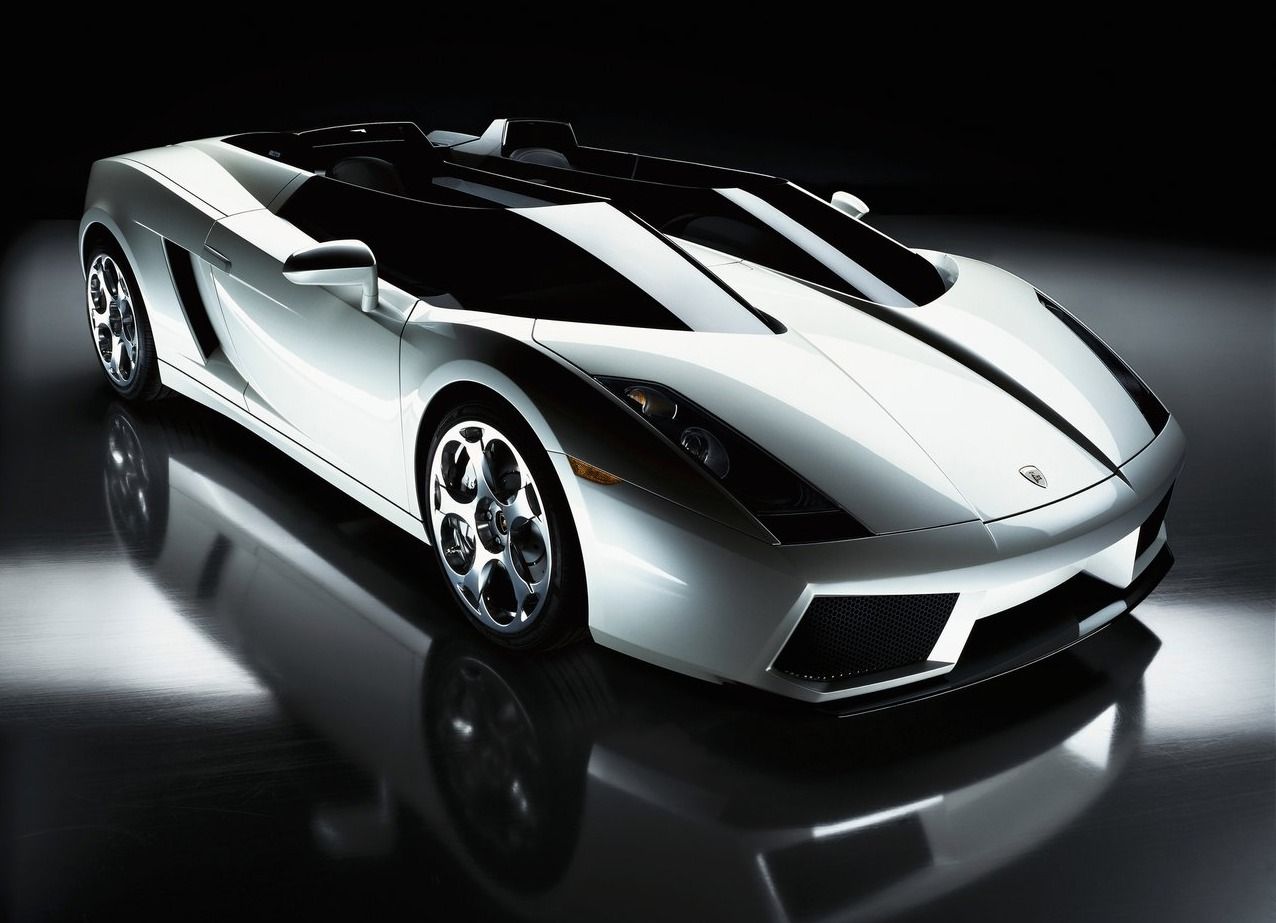
First shown at the 2005 Geneva Motor Show, the Lamborghini Concept S was a radical reinterpretation of the Gallardo. Designed by Luc Donckerwolke, it featured an open-cockpit layout with a split windscreen, effectively creating two separate driver and passenger compartments.
This futuristic design emphasized Lamborghini’s flair for the dramatic while remaining functional as a high-performance roadster. Powered by a 5.0-liter V10, it delivered Gallardo-level thrills with an added dose of exclusivity. Although initially planned for limited production, only one functional prototype was built, making the Concept S one of Lamborghini’s rarest and most fascinating design experiments.
9. Lamborghini Egoista (2013)
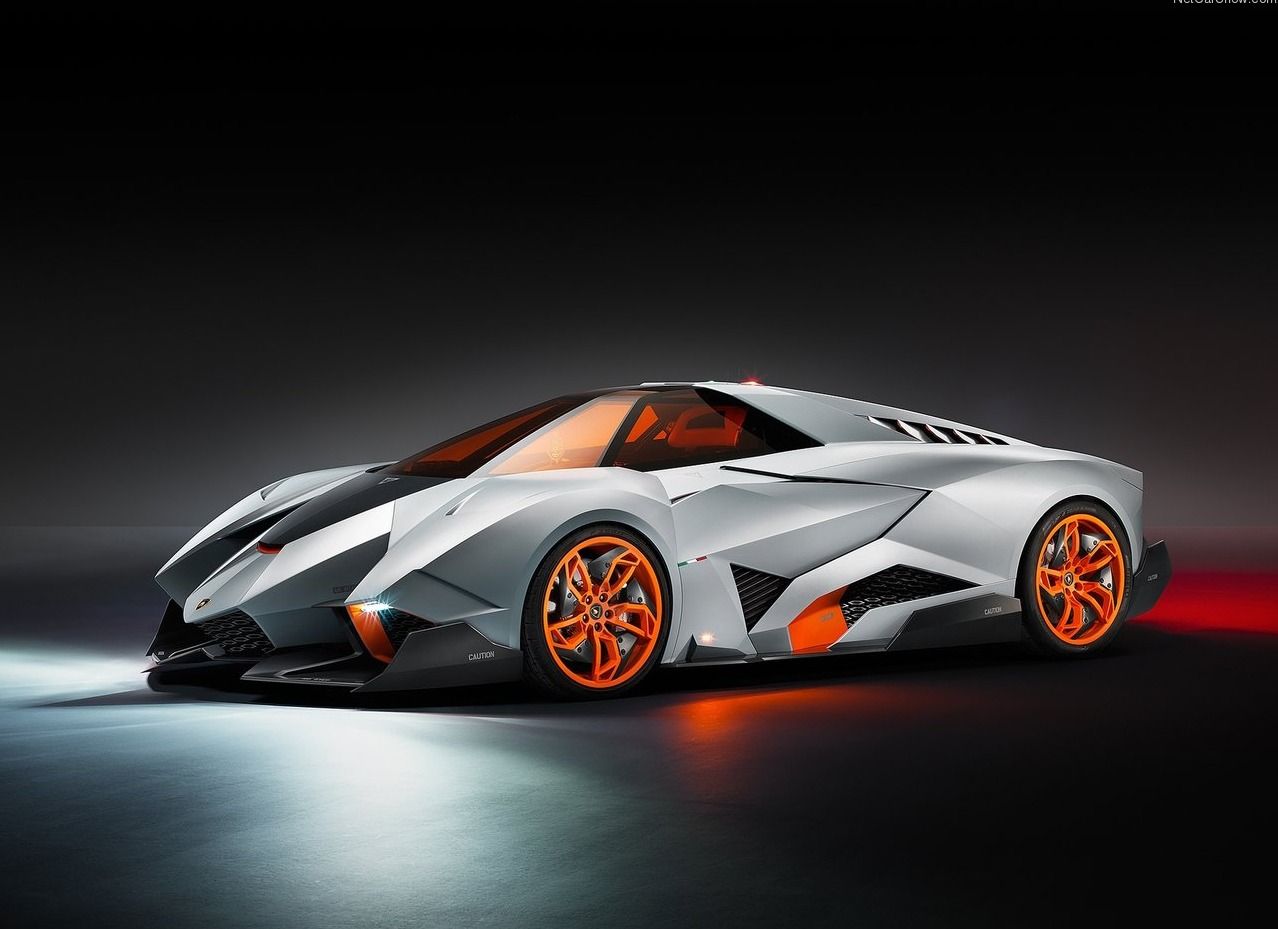
Unveiled in 2013 to celebrate Lamborghini’s 50th anniversary, the Egoista was the ultimate expression of excess and individuality. Its name—Italian for “selfish”—perfectly matched its single-seat layout, resembling a fighter jet cockpit more than a road car.
Designed by Walter de Silva, the Egoista featured sharp, aggressive lines, LED lighting, and an aviation-inspired canopy that lifted off for entry. Powered by a 5.2-liter V10, it was as extreme mechanically as it was visually. Lamborghini never intended it for production; instead, it was a rolling statement piece showcasing the brand’s relentless drive to shock, inspire, and thrill its fans.
10. Lamborghini Miura Concept (2006)
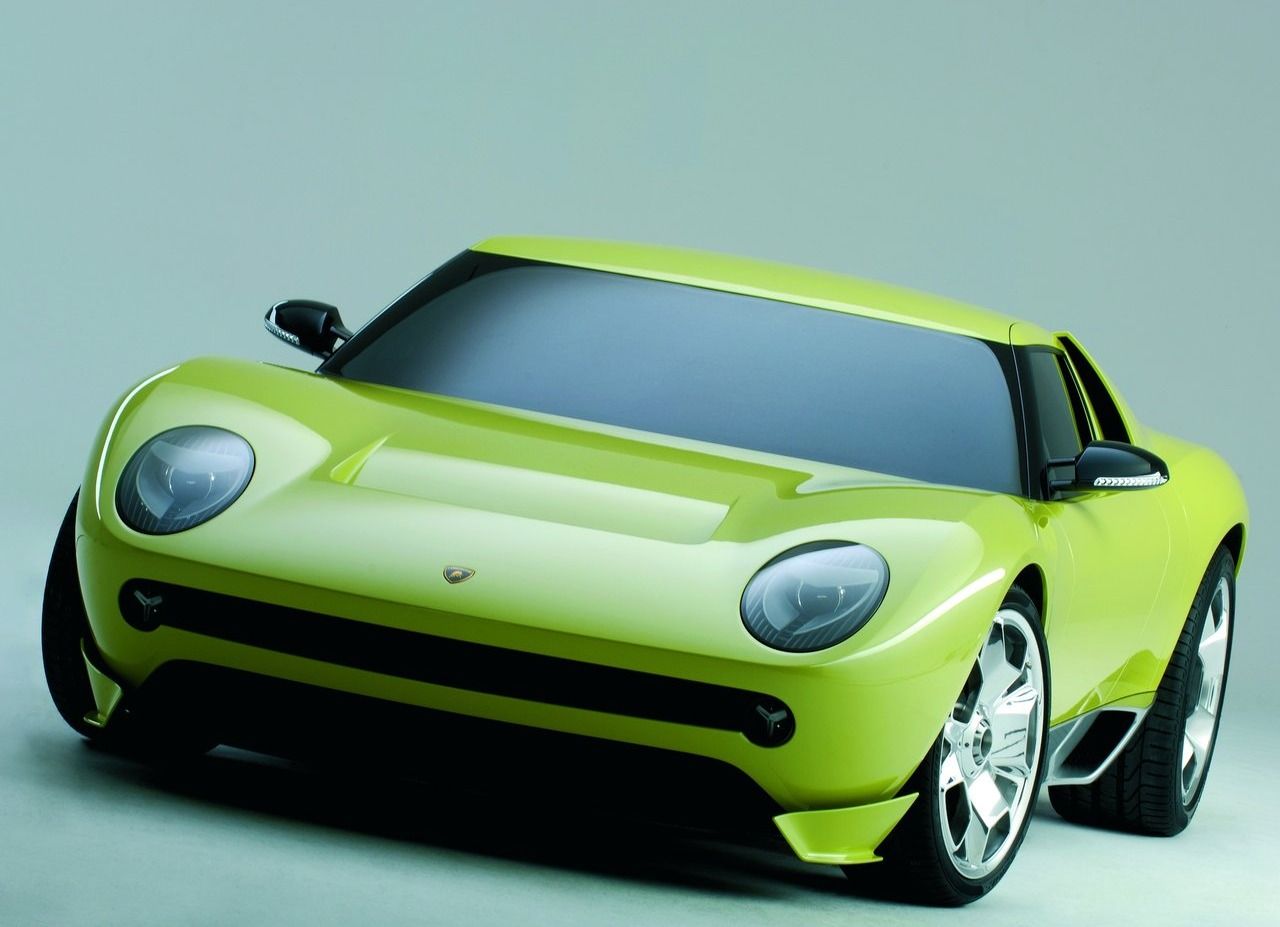
In 2006, Lamborghini revived its most legendary nameplate with the Miura Concept, designed by Walter de Silva. The car was a modern reinterpretation of the 1966 Miura, the world’s first true supercar, blending retro styling cues with contemporary proportions and technology.
Its long nose, swooping lines, and signature headlight “eyelashes” paid homage to the original, while its chassis was based on the Murciélago. Though fans clamored for production, Lamborghini insisted it was purely a design exercise.
11. Lamborghini Asterion LPI 910-4 (2014)
Unveiled at the 2014 Paris Motor Show, the Asterion was Lamborghini’s first plug-in hybrid concept. With a 5.2-liter V10 paired with three electric motors, it delivered a combined 910 horsepower and could even drive short distances in pure EV mode.
It was more of a GT car than a raw supercar, with a focus on comfort and long-distance cruising. Lamborghini ultimately decided against production, arguing that the world wasn’t ready for a hybrid Lambo—though the Asterion hinted at the future direction of electrification in Sant’Agata.
12. Lamborghini Portofino (1987)
Created by Chrysler’s Pacifica Design Center (after Chrysler acquired Lamborghini), the Portofino was a bold four-door concept based on the Jalpa chassis. With scissor doors on all four sides and a futuristic wedge-shaped design, it foreshadowed Lamborghini’s later experiments with sedans like the Estoque.
The Portofino never made it to production but was significant because it marked Chrysler’s influence on Lamborghini styling at the time.
13. Lamborghini Cheetah (1977)
Before SUVs became Lamborghini’s bread and butter, the brand experimented with off-roaders. The Cheetah was developed for military use with an American-built V8 mounted in the rear.
Though it wasn’t successful, the project paved the way for the iconic LM002 “Rambo Lambo” in the 1980s. While technically more of a prototype than a pure concept, it’s often listed among Lamborghini’s most fascinating one-offs.
14. Lamborghini Nanuk Quattro (2013)
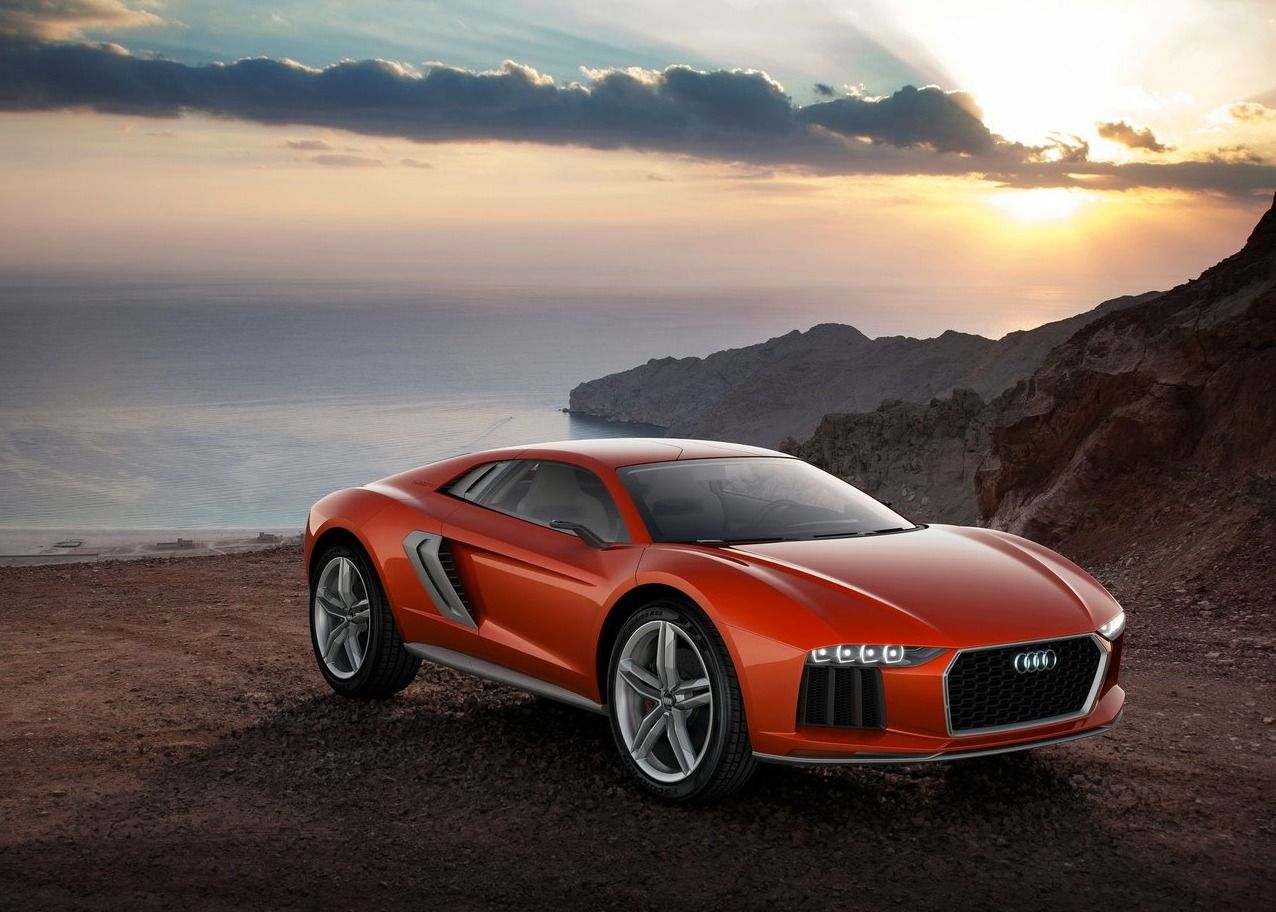
The Lamborghini Nanuk Quattro, revealed at the 2013 Frankfurt Motor Show, was one of the brand’s most unusual concepts. Developed with Italdesign, it fused the DNA of a supercar with an off-road sports coupe.
Powered by a 5.0-liter V10 producing 544 horsepower and paired with Audi’s Quattro all-wheel-drive system, it promised both blistering performance and rugged versatility. Its design borrowed elements from the Huracán but with a lifted, aggressive stance. While intriguing, the Nanuk never progressed beyond concept stage, serving more as a showcase of Lamborghini’s ability to experiment with bold crossovers of performance and utility.
15. Lamborghini Terzo Millennio (2017)
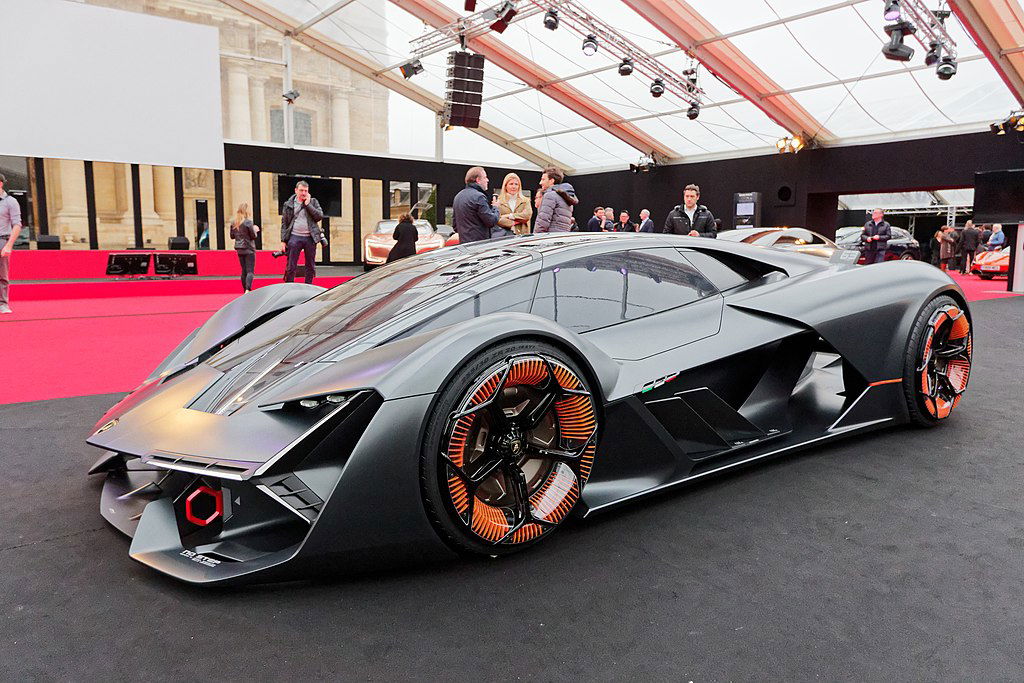
The Terzo Millennio, unveiled in 2017, was Lamborghini’s vision for the future of supercars. Created in partnership with MIT, it explored groundbreaking technologies including self-healing carbon fiber, supercapacitors for energy storage, and advanced aerodynamics.
With its radical, otherworldly design and all-electric powertrain concept, the Terzo Millennio looked like it had driven straight out of a sci-fi movie. Though never intended for mass production, it highlighted Lamborghini’s commitment to innovation while staying true to its wild design philosophy.
The Last Word On Lamborghini Concepts
Lamborghini has never been afraid to dream out loud, and its concept cars prove it. From retro-inspired homages like the Miura Concept to wild experiments such as the Terzo Millennio, each design pushed boundaries in performance, style, or sheer audacity.
While many of these machines never reached production, they left a lasting mark on automotive design and often foreshadowed future models. Whether practical, outrageous, or downright futuristic, Lamborghini’s concepts remind us that the brand thrives on imagination as much as horsepower.
